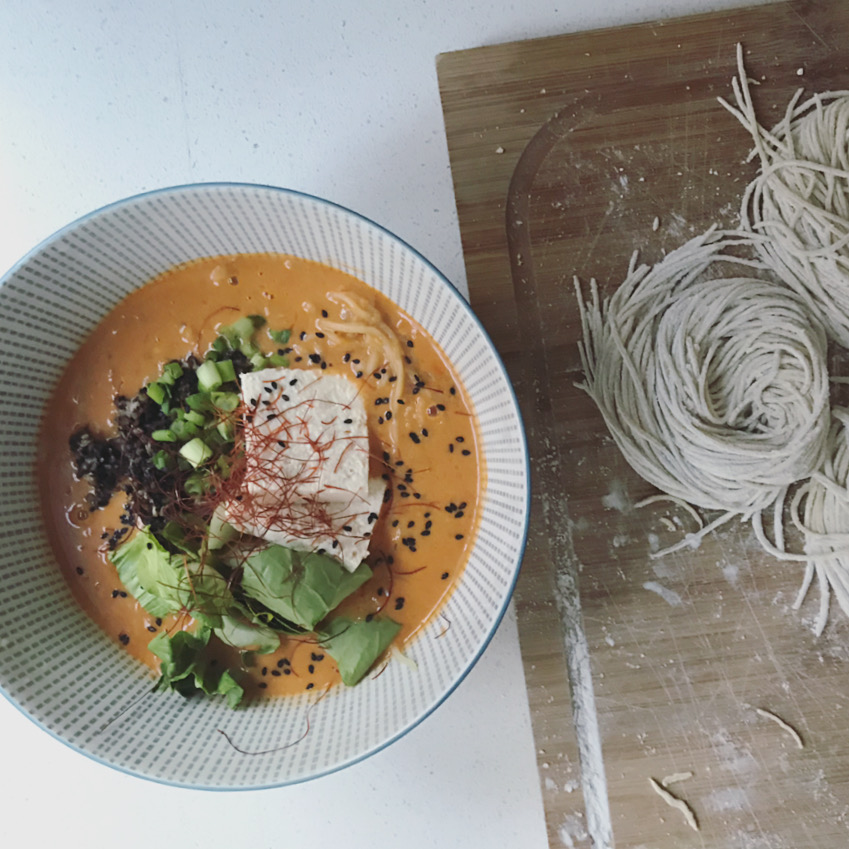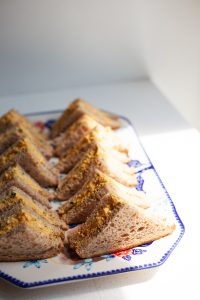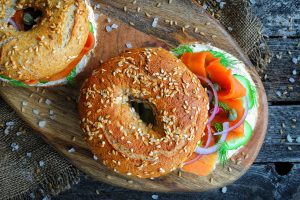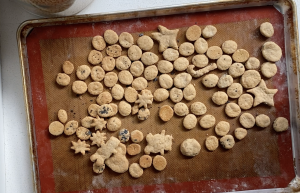If you follow me on Instagram, you may have noticed that I’m obsessed with ramen and recently I learned to make the noodles from scratch. It all started because I was craving ramen soup and didn’t know where to buy fresh noodles during the pandemic. I was amazed to discover that making them was pretty easy. It just requires a pasta machine and very basic chemistry. Yep, chemistry. To make ramen, you need an alkaline solution. Traditionally what is used is Kansui or lye water which contains 80% sodium carbonate and 20% potassium carbonate. This solution is what gives the noodles a chewy texture, light yellow colour and distinct smell.
It’s hard to find Kansui in North America but it turns out you can make something similar at home with baking soda. Just pop baking soda onto a baking tray and bake for one hour at 250°F. I added about half a cup which was plenty since the recipe requires 1.5 teaspoons at a time. The baking process transforms baking soda aka sodium bicarbonate to sodium carbonate, which by the way, is the main ingredient in dishwashing tabs. Yup, DIY dishwashing tabs and ramen, thank you sodium carbonate! I know this seems complicated but it’s not, I promise. If you have a pasta machine, give this recipe a shot. You won’t regret it. It’s so fresh, chewy and delicious in a homemade vegan broth. If you’re looking for a little visual guidance, I created a story highlight on Instagram called “ramen” if you want to follow the steps. You can also watch my reel below.
My go-to broth featured in the photo above is Vegetarian Ramen from Just One Cookbook.
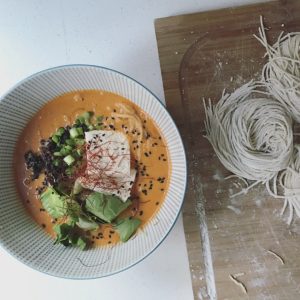
Homemade Ramen Noodles from Scratch (Vegan)
Equipment
- Pasta Machine
Ingredients
- 2 cups all-purpose flour
- 3 tbsp vital wheat gluten *Can be omitted if you use bread flour instead of all purpose see note below.
- 1.5 tsp baked baking soda aka sodium carbonate **See preparation notes
- 1 tsp salt
- 1 cup water
- Corn starch to prevent sticking
Instructions
- Dissolve baked baking soda in a tablespoon of water to make an alkaline solution, set aside.
- Mix all dry ingredients, except corn starch, in a bowl and slowly mix in alkaline solution. It will shape into a very dry dough ball, this is good. It should be hard to shape but not impossible. If the dough is too dry to shape, add a touch of water. If the dough is sticky or wet, add flour.
- Using a rolling pin, roll dough into a rectangle with a width of about 4 – 6 inches. Let it rest in the fridge for an hour or so.
- Cut the rectangle into 2-inch pieces and run them through your pasta machine, starting with the thickest setting and working your way down. I like it set to the second to the smallest setting (2) but adjust to your desired thickness.
- Pass the final sheet of dough through the spaghetti cutter. Dust final noodles with a generous amount of corn starch to keep them from sticking.
- To cook: Add ramen to boiling water and cook for 1 -2 minutes. Serve fresh! Cooked ramen won't keep. Uncooked ramen keeps well in the fridge for a week or two.
Notes
.

